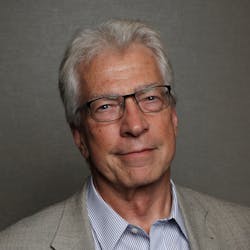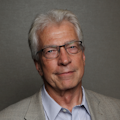
The creation of the Center for Freeform Optics is major news indeed. Using $4 million from federal, industry, and academic sources, the Center brings together the University of Rochester, University of North Carolina at Charlotte, several government labs, and six optics companies. Freeform optics are not limited to spherical or even rotationally symmetric aspherical shapes, and have the potential to transform the field of optics if the cost of design and fabrication can be reduced.
Whether formalized or not, the type of public-private partnership that created this Center has become the norm in research centers around the world, and is part of the plans by both the Photonics21 community in Europe and the U.S. National Photonics Initiative. I was reminded of the value of such partnerships when I recently visited an optics manufacturing facility and saw a magnetorheological finishing (MRF) machine, which has had a significant impact on the precision that can be achieved in optics manufacturing. The optical engineers who were delighted with its performance were not aware that it was first invented by academic researchers in Belarus in the 1980s, further developed by a team associated with the Center for Optics Manufacturing in Rochester with substantial government funding, and launched as a commercial product line by QED Technologies in 1998.
If you trace back far enough, most of the technologies and products to be found in every issue of Laser Focus World have heritages that include some mix of academia, industry, and government support—from the fiber lasers now drilling holes in aerospace components (see page 53), to fiberoptic probes for medical imaging with OCT (see page 49) and GaN-based RGB LEDs (see page 46) for lighting. We need to continue this tradition of partnership—it is a well-established and successful means of advancing technology, developing important products, and delivering new applications and benefits to the world.
About the Author

Conard Holton
Conard Holton has 25 years of science and technology editing and writing experience. He was formerly a staff member and consultant for government agencies such as the New York State Energy Research and Development Authority and the International Atomic Energy Agency, and engineering companies such as Bechtel. He joined Laser Focus World in 1997 as senior editor, becoming editor in chief of WDM Solutions, which he founded in 1999. In 2003 he joined Vision Systems Design as editor in chief, while continuing as contributing editor at Laser Focus World. Conard became editor in chief of Laser Focus World in August 2011, a role in which he served through August 2018. He then served as Editor at Large for Laser Focus World and Co-Chair of the Lasers & Photonics Marketplace Seminar from August 2018 through January 2022. He received his B.A. from the University of Pennsylvania, with additional studies at the Colorado School of Mines and Medill School of Journalism at Northwestern University.